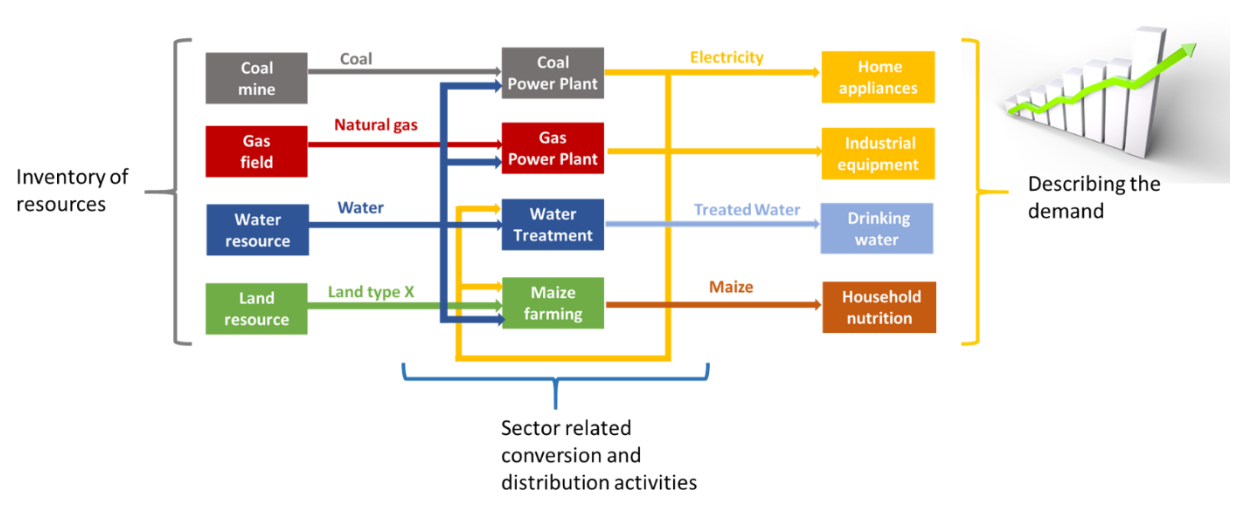WEF Model Development gaining insights from the EPIC Africa Transition Space dialogue – Lessons from Kenya Meeting February 2024.
EPIC Africa development of fully open-source models for integrated assessment of synergies and trade-offs between resources systems water-energy-food in the Volta and Tana river basins (work package 4) is well under way. The models are constructed using the OSeMOSYS tool (http://www.osemosys.org/ ), with a user-friendly interface developed by UNDESA. The intention is that these country models can aid in studying the implications of different policy and development options using long-term, water-energy-food perspectives, until 2060. Special attention is given to the Volta and Tana river basins, enabling hydropower for affordable, renewable electricity generation, but also benefits such as flood-control and irrigation.
Ongoing activities for model development can be summarised using the simplified schematic below.

For each river basin the model is organised for analysing least-cost demand satisfaction, following an inventory of resources relevant to the countries included. Understanding the demand development until 2060 requires projections, as well as examining established targets. Equally important is the proper description of the generation/production options of relevance (capacities and annual output). All this will be done while making sure that the land/food, water and energy resources and demand systems are equally represented. Setting up the proper model is thus associated with the very important step of data-collection. Local partners and stakeholders are collaborating with data collection, curation and data quality assessments.
Defining constraints to the models is also part of the knowledge input needed for creating insightful, and representative models of the river basins. Examples of such are:
- Emission Constraints, e.g for CO2 representing the country NDCs.
- Maximum capacity allowed per power generating alternative, e.g. to represent the technical potential of wind and larger scale PV, or to put a limit on how much nuclear power can be installed.
- Maximum change in land-use, leading to e.g. a clearer estimate of land for agriculture and land for modern biomass.
The trick throughout is to build models that have sufficient detail to represent well all dynamic interactions of the river basin’s WEF-context, without including too many details that prevent the overview needed for engaging stakeholders in a dialogue based on model output. In EPIC Africa, the overall project design is made for having continuous discussions with sector specific expertise throughout the model development. The EPIC Africa Transition Space Meeting in Kenya was the first opportunity for WP4 to discuss the model aspects per above, from data to relevant constraints, to relevant water-energy-food interactions for Kenya. Many lessons were noted, and will now be implemented in the model work, for example:
- Renewable energy potentials for geothermal, wind and solar
- Land use change and changing agricultural patterns to consider long-term.
- The present rapid penetration of rooftop PV due to high electricity prices.
- Issues in governance – dams controlled by water resources authority and ministry with room for improved communication with planners and managers of the hydropower.
- Climate change effects on operation of the hydropower plants and water reservoirs
- Scaling up community-led activities to the national level to be represented in the model
Almost 18 months into the EPIC Africa project, interest in WEF planning and development is increasing, and engagement is large. It is a pleasure to be on board this project.

